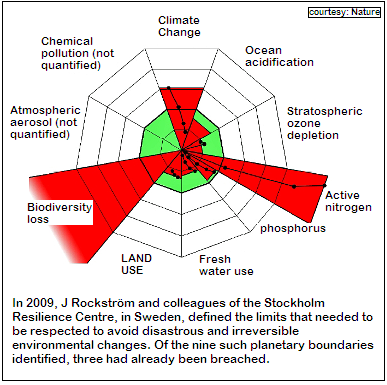Biofuels - messiah or myth?
Bio-fuels, once seen as the alternative for scarce petroleum, have limitations that prevent their extensive use, says S.Ananthanarayanan.
The 1970s were years of innocence - we became aware of the fuel crisis, but we did not suspect global warming. It was only in 2006, that Al Gore, with his documentary, ‘An inconvenient truth’ brought it home to many that the earth may never be the same
again.
Global warming is the awful truth about human activity, largely in the last century and most of all in the last few decades Bio-fuels, once seen as the alternative for scarce petroleum, have limitations that prevent their extensive use, which has pumped
CO2 (mostly) and some other gases, which trap heat, into the atmosphere. And this has set into motion a rapid rise in global temperature, leading to melting of polar ice caps and many large glaciers, soon to lead to rise in the sea levels and unpredictable
changes in weather in all parts of the world.
Apart from rise in CO2 from burning coal for electricity and petroleum for transport, to cater to a growing world population, the same population is also making large demands for food, to be provided by farmland and pasture for livestock. Agriculture,
industry and housing needs are hence also encroaching on forests and other areas of greenery, and eliminating the engines of fixing atmospheric CO2 back into oxygen. It is estimated that increased use of land for food crops would soon cross the so called planetary
boundary, or the limit that would lead to irreversible changes.

But, at the time of the oil crisis in the 1970s, when the Arabs realized that oil will not last forever, we believed that the problem was one of finding alternatives to petroleum. France, with negligible coal reserves, accelerated her nuclear programme
and stopped all use of oil for power generation. But for other alternatives to the use of oil for transport and also electricity generation, the discovery of bio-fuel, or motor spirit derived from organic matter, appeared to be a Godsend. But, while nations
rushed to maximize this new messiah, other realities, for one, that even cleaner fuel, like bio-fuel, added CO2 to the atmosphere, and then, that cultivation of plants for bio-fuel would eat into limited land, which was needed for food crops, soon became apparent.
Dr Running from the University of Montana, in Missoula, USA starts with an existing estimate of the total vegetable matter created all over the earth by fixing carbon with the help of sunlight, through photosynthesis. This figure, without a correction
for the portion used by the plants themselves, is estimated with the help of satellite data of the amount of light absorbed in wavelengths that are used in photosynthesis, all over the earth. The absorption would obviously vary from place to place and according
to the season, but the average comes to about 53 billion tonnes, on land, and about the same in the sea. As the biomass created in the sea is consumed by organisms in the sea, what is left is only the part created on land.
Not all this biomass, however, is available for humans to use. Some 28% is biomass created as the root structure underground. Some 24% is in the wilderness, including national parks, and is either out of reach or not desirable to exploit. Of what is left,
some 80% is being used by humans for food, fibre and fuel, and only about 5 billion tonnes, out of 53 billion, is left, and may be the reserve for population increase expected in the coming decades.
But now, Dr Running notes, there is a competitor for this last 5 billion tonnes, in the form of bio-energy. Bio fuels are largely based on grain which is fermented to create methanol, or from fats to create bio-diesel, to be used in place of or along with
petrol or diesel to run IC engines, and bio-fuels now account for under 10% of the total energy produced and consumed in the world. But then, if the world pushes up the prices of energy, as it must, then many energy producing agencies may like to shift from
fossil fuels to bio-energy, which would lead to massive bio-mass farming.
“The energy markets can out-compete the food markets financially, so bio-energy production could replace food production on a large enough scale to disrupt the current economics of agriculture and even generate food shortages. The ethanol fuel goals of
the U.S, government doubled the commodity price of corn from around $2 to $4 per bushel in the last half dozen years, disrupting the global corn market. It is easy to imagine that any major development of bio-energy could be on a collision course with global
food security,”Dr Running says.
The next point that Dr Running makes is what good would all the use of biomass for energy do? All the remaining 5 billion tonnes of biomass, if used for energy, would be able to create less than 20% of the energy being used. Creating any more energy than
that would call for biomass cultivation to eat into existing agricultural land or into wilderness and forest reserves, which would affect the earth’s carbon fixing capacity and biodiversity.
But there are still ways to manage bio-energy so that it does not erode food supplies, says Dr Running. A good part of the bio-energy potential is from agricultural and forest residues and municipal trash. While all the figures are estimates, it may not
be far wrong to say that ways could be found to generate a fourth of our energy needs from bio-mass, he says. But this would need careful design of a bio-energy and food production policy, for optimum division of biomass between electricity generation and
producing ethanol and for allowing a part of crop residues to remain as nutrient for the next year’s crop.
(To read more articles by popular science writer S.Ananthanarayanan, visit http://www.simplescience.in)